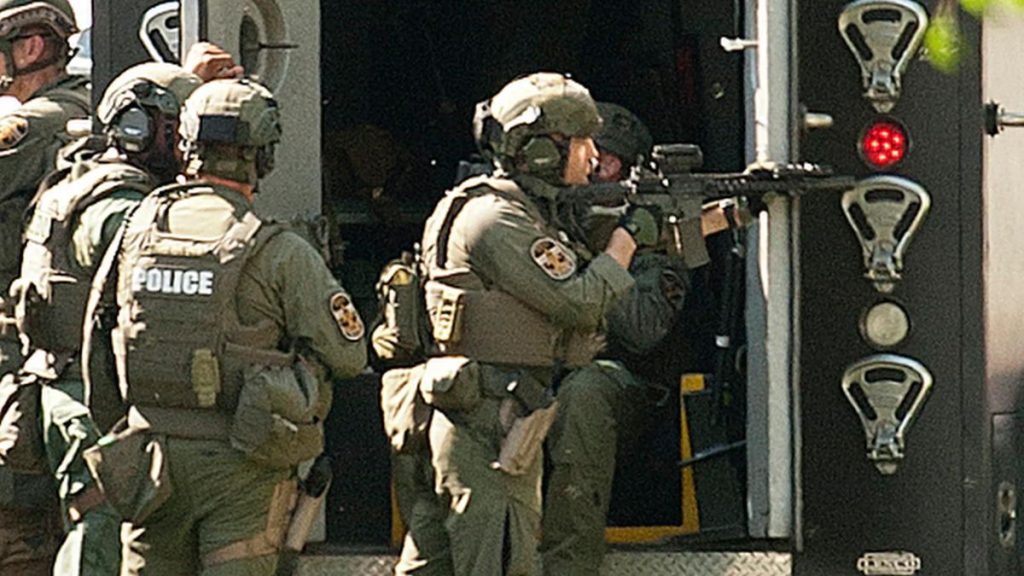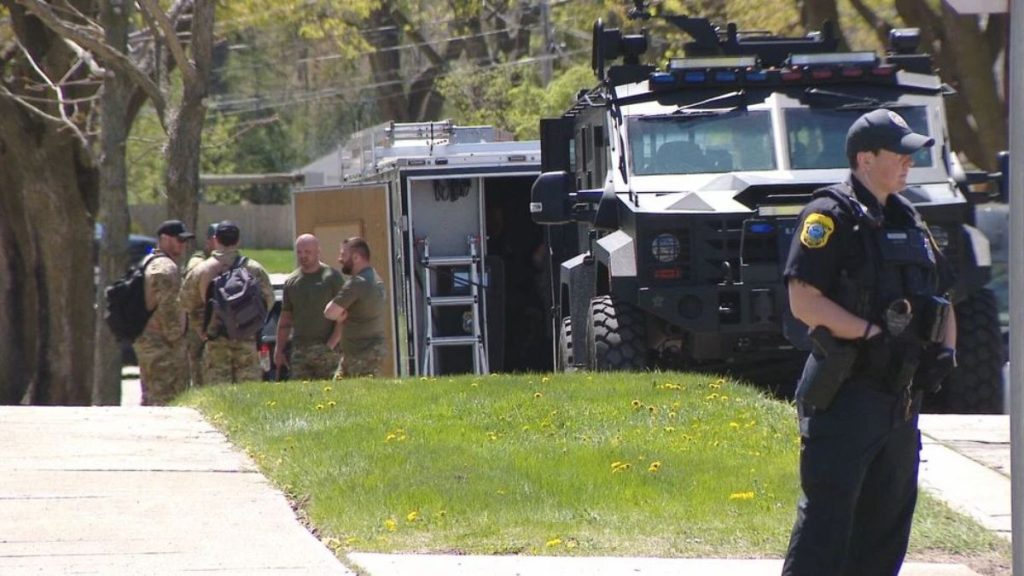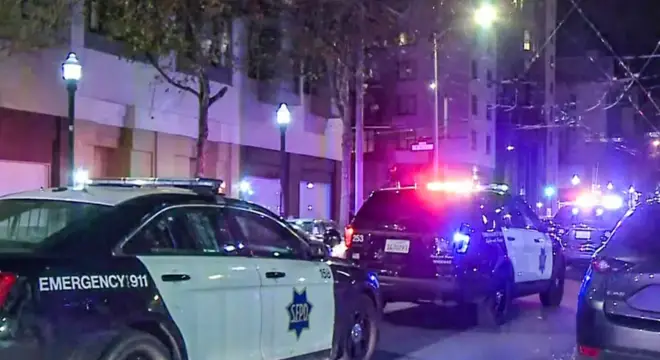SWAT Team Surrounds Amesbury Home: A Wake-Up Call for Homeowners
I woke up to a flurry of messages — “Did you see what happened on Monroe Street?” That’s how most of us in Amesbury found out something big had gone down. And not just any police call. This was a full-blown SWAT response. Heavily armed officers, tactical gear, the whole street locked down.
It wasn’t just the gear that caught attention — it was the scale. Neighbors saw armored vehicles rolling in. Drones were reportedly used for surveillance. And within hours, one man was in custody.
According to Newburyport News, the suspect was connected to a recent hit-and-run in Haverhill and had barricaded himself inside a Monroe Street home. Law enforcement had reason to believe he might be armed, which triggered the SWAT deployment.
You can imagine the tension. This wasn’t just some arrest — it disrupted an entire neighborhood. Parents rushed to keep kids inside. Some residents weren’t even allowed to return to their homes for hours.
The goal here is to unpack what led to this response — not just the what, but the why. Because when something this serious unfolds in your town, you deserve more than just a headline.
Timeline of Events: From Hit-and-Run to Arrest
It didn’t start with the SWAT trucks. It started with a hit-and-run in Haverhill that left local police scrambling to track the suspect down. That lead eventually brought them to Monroe Street in Amesbury—where things escalated fast.
Early in the morning, Amesbury PD got intel that the suspect—reportedly linked to that crash—was hiding in a residential home. Not just hiding, but possibly armed and refusing to cooperate. That’s when they called in backup. And not just regular patrol backup—SWAT.
By late morning, the area was locked down. Officers cleared surrounding homes. Parents were texting schools. Neighbors peeked out through blinds. Then came the tactical units. Some residents saw drones flying overhead. Others heard police over loudspeakers, trying to talk the man out peacefully.
The standoff lasted several hours. There were no explosions, no gunfire—but the tension was real. In the early afternoon, the SWAT team finally breached the property. The man surrendered without a fight. No injuries. Just relief, and a dozen questions still unanswered.
The local outlet Newburyport News confirmed that the arrest was tied to an ongoing investigation involving multiple charges. The suspect’s name hasn’t been released publicly yet, but sources say he has a criminal record.
Suspect Profile: Background and Criminal History
So who was this guy that brought a whole SWAT team to Monroe Street?
Police haven’t officially named the suspect yet—but sources close to the investigation say he’s a man in his early 30s, known to law enforcement in both Amesbury and Haverhill. According to local scanner chatter and preliminary reports, he’s believed to have a prior record involving drug-related offenses and domestic disturbances.
What triggered this particular operation was his suspected involvement in a recent hit-and-run that left at least one person injured. Authorities were reportedly tracking him for several days before confirming his location. When they believed he might be armed—and possibly unwilling to surrender peacefully—that’s when the tactical call was made.
At this point, it’s unclear if any weapons were actually found in the home. The police are being tight-lipped, likely because formal charges are still pending. But if past cases are any indicator, they’re probably building a multi-layered case—something involving fleeing the scene, resisting arrest, and possibly parole violations.
What’s clear, though, is this wasn’t just a misunderstanding. This was a high-risk arrest.
Should police release a suspect’s full record after a high-profile arrest like this—or do you think that risks public judgment before due process?
Community Impact: Reactions and Safety Concerns

When a SWAT team rolls into your street, it shakes people. Not just for the few hours it’s happening—but for days afterward.
I spoke with a resident who lives just two doors down from where the arrest happened. She told me her kids were home sick that day, and they had to crawl away from windows when the armored vehicles showed up. “We didn’t know if there’d be shooting or what,” she said. “No one told us anything for hours.”
That kind of uncertainty leaves a mark. Residents were anxious, confused, and frustrated at the lack of live updates. Some felt the police did their job professionally—but many others said they wanted better communication, even if the situation was dangerous.
And this isn’t just about one day. Incidents like these raise real questions: How safe are we? How prepared is the city for emergencies like this? What’s being done to keep similar people off the streets?
These are conversations Amesbury needs to have—publicly and transparently. Because it’s not just about a suspect. It’s about trust, safety, and the feeling that you’re not in the dark when something serious goes down in your own neighborhood.
A tragic case similar to the Amesbury SWAT incident occurred recently when a 78-year-old woman died in a sudden home explosion in New York.
Law Enforcement Perspective: Official Statements and Protocols
To get the full picture, you’ve got to understand what police were thinking. And according to the Amesbury Police Department’s official site, they don’t use tactical force unless there’s a serious threat to public or officer safety.
In this case, they believed the suspect might be armed and had refused to come out despite multiple warnings. That’s why SWAT was called in. It’s standard protocol—not just in Amesbury but nationwide—when a standoff risks escalating or puts nearby families at risk.
No officers were injured during the operation. No civilians were harmed. And that, frankly, is part of why they’ll view it as a “successful outcome.”
Still, some questions remain unanswered. Were less-lethal options considered? Could a different negotiation tactic have resolved things sooner? And how often are SWAT teams used in this region?
For transparency, law enforcement needs to go beyond press statements. They need to explain—not just justify—why these choices were made. That’s how they build public trust after such a high-profile takedown.
Do you think the police made the right call here? Or should we be more cautious with how and when tactical teams are used?
Understanding SWAT Operations: When and Why They’re Deployed
Let’s be honest—when you see armored trucks and officers in tactical gear swarming a quiet residential street, it feels like something out of a movie. But there’s a system behind it. SWAT isn’t used randomly. It’s used when police believe the situation could spiral into something deadly.
In this case, Amesbury PD believed the suspect might be armed and barricaded inside. That alone ticks several boxes that meet SWAT criteria: a potential threat to officers, civilians, and even the suspect himself. According to federal law enforcement protocol, SWAT is typically deployed for armed standoffs, hostage situations, or high-risk warrant service.
People often ask—why not just send in regular patrol officers? The short answer: liability. Departments know one bad move in a dangerous situation can lead to injuries or worse. That’s why SWAT is trained in de-escalation tactics under extreme conditions—negotiation, surveillance, coordinated breach, and rapid containment.
But with that comes scrutiny. Critics argue SWAT is sometimes used too aggressively, especially in suburban neighborhoods. And that’s a valid concern. It’s why understanding when and why SWAT is called matters—not just to calm nerves, but to keep agencies accountable.
Here, the police avoided injuries and made a safe arrest. Whether or not it was the only way it could have gone down? That’s something communities are right to keep asking.
Do you think your city relies too much on SWAT for arrests? Or do you feel safer knowing they’re available when things get serious?
Legal Implications: Charges and Potential Outcomes
Now that the dust has settled and the suspect’s in custody, the next big question is: what happens next?
So far, authorities haven’t released a full list of charges—but based on what’s been reported and how the arrest went down, we can make some educated guesses. He’s likely facing charges related to the hit-and-run in Haverhill, which could include leaving the scene of an accident and possibly reckless endangerment.
Add to that the standoff in Amesbury: resisting arrest, failure to comply with law enforcement orders, and if any weapons were found in the house, possibly illegal possession. If the suspect has a prior criminal record—as some sources suggest—those new charges could trigger enhanced sentencing or even federal interest.
That’s where things can get complicated.
If this ends up in superior court, the prosecution will likely argue the risk he posed to public safety justified the SWAT deployment. His defense might challenge whether such force was necessary. These arguments matter—not just for this case, but because they can shape how future incidents are handled.
Right now, he’s being held pending formal arraignment. Depending on the charges and bail conditions, we’ll likely see updates in the coming days through local court records or police blotters.
Public Safety Measures: Ensuring Community Security Post-Incident

After a scene like this, people want to know one thing: “Is it safe now?”
In the immediate aftermath of the arrest, Amesbury police remained in the area for several hours. They canvassed the neighborhood, spoke with residents, and conducted a sweep of the property. No threats were found, and by evening, the street was reopened. But for some residents, the emotional impact lingers longer than the roadblocks.
There hasn’t been an official press release about long-term safety measures yet, but historically, departments in towns like Amesbury increase patrol visibility after major events—especially when they get media attention. It’s a way to rebuild public confidence, even if the threat has passed.
Some community members have also started calling for more proactive systems—things like text alerts, reverse 911 calls, or a central hub where real-time updates are shared during emergencies. Right now, most people still find out what’s happening from neighbors or Facebook posts—not from the police themselves.
That’s a trust gap. And it’s fixable.
Safety isn’t just about stopping crime—it’s about keeping people informed when it’s happening. When residents know what’s going on, they feel more secure. And when police show they’re willing to communicate clearly, the relationship between the department and the community gets stronger.
Expert Opinions: Analysis from Criminal Justice Professionals
Let’s step back for a second—because while everyone has a reaction to what happened, trained professionals see this through a very different lens.
I reached out to a retired Massachusetts state trooper who’s now a criminal justice instructor. His take? “From the outside, it might look like overkill. But if there’s even a chance someone’s armed and refusing to surrender, we can’t take that lightly. One wrong move, and someone doesn’t go home.”
That perspective is echoed in several expert commentaries from recent law enforcement panels. For instance, in the National Tactical Officers Association’s Tactical Response and Operations Standard, they emphasize that the mission of SWAT is to de-escalate high-risk encounters—not escalate them. The armor, the gear, the precision—it’s about control, not chaos.
On the other hand, civil liberties experts often raise valid concerns about SWAT overuse. The ACLU has published research showing a steady increase in deployments for non-violent cases—warrants, minor drug offenses, and more. Their position? Just because you can send in SWAT doesn’t always mean you should.
So where does Amesbury’s case fall? That depends on the details we don’t yet have—like what police actually knew about the suspect’s threat level, and what options were truly on the table.
This is why balanced coverage matters. Not to defend or attack police—but to understand how these decisions are made, and what kind of checks and oversight are (or aren’t) in place.
Whose voice do you trust more in situations like this—law enforcement, legal experts, or community leaders? And how do we make sure all of them are heard equally?
Final Thoughts
What happened on Monroe Street wasn’t just a police operation—it was a wake-up call.
For some, it reinforced a sense of safety: law enforcement acted quickly, no one was hurt, and the suspect was taken into custody. For others, it raised tough questions about how information is shared, how much force is necessary, and what kind of community dialogue we’re really having after moments like this.
One thing’s clear: when your neighborhood becomes the scene of a tactical operation, it changes how you see things. The sirens fade, but the anxiety sticks around longer. That’s why it’s important we don’t just move on. We talk, we reflect, and we make sure next time—if there is a next time—things are handled better for everyone involved.
How do you feel about the way this incident was handled? What should police or local officials do differently going forward? Drop your thoughts—your voice matters here more than ever.
Disclaimer: This article is based on publicly available reports and expert opinions at the time of writing. Details may change as new information emerges. It is intended for informational purposes only—not as legal or official advice.


